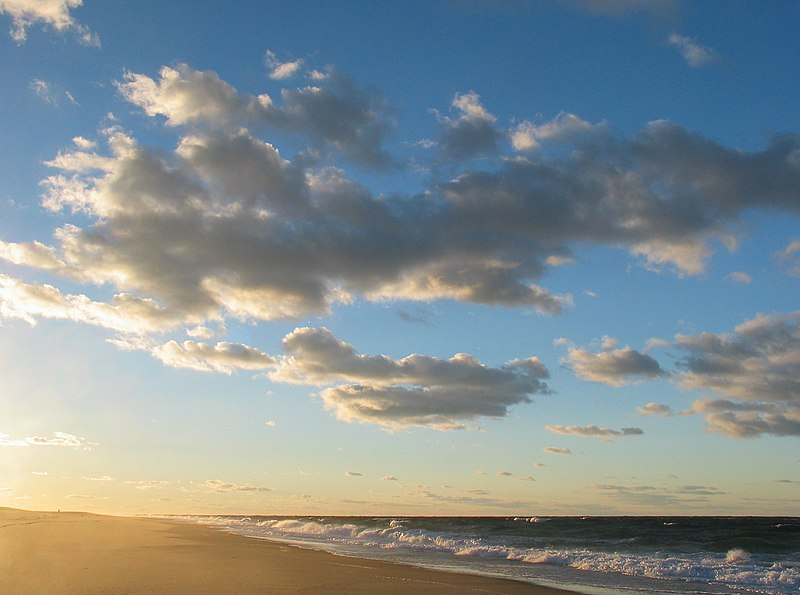
In 1925 naturalist Henry Beston built a cottage on Cape Cod and fell in love with the sea:
Sound of surf in these autumnal dunes — the continuousness of it, sound of endless charging, endless incoming and gathering, endless fulfilment and dissolution, endless fecundity, and endless death. I have been trying to study out the mechanics of that mighty resonance. The dominant note is the great spilling crash made by each arriving wave. It may be hollow and booming, it may be heavy and churning, it may be a tumbling roar. The second fundamental sound is the wild seething cataract roar of the wave’s dissolution and the rush of its foaming waters up the beach — this second sound diminuendo. The third fundamental sound is the endless dissolving hiss of the inmost slides of foam. The first two sounds reach the ear as a unisonance — the booming impact of the tons of water and the wild roar of the up-rush blending — and this mingled sound dissolves into the foam-bubble hissing of the third. Above the tumult, like birds, fly wisps of watery noise, splashes and counter splashes, whispers, seethings, slaps, and chucklings. An overtone sound of other breakers, mingled with a general rumbling, fells earth and sea and air.
He left the cottage two years later, moved back to Quincy, and proposed to Elizabeth Coatsworth. When she learned that he had many notes from his stay on the beach but no manuscript, she said, “No book, no marriage,” and The Outermost House was published in 1928.
The sea itself claimed the cottage in 1978.
(Via The Oxford Book of the Sea, 1992.)
